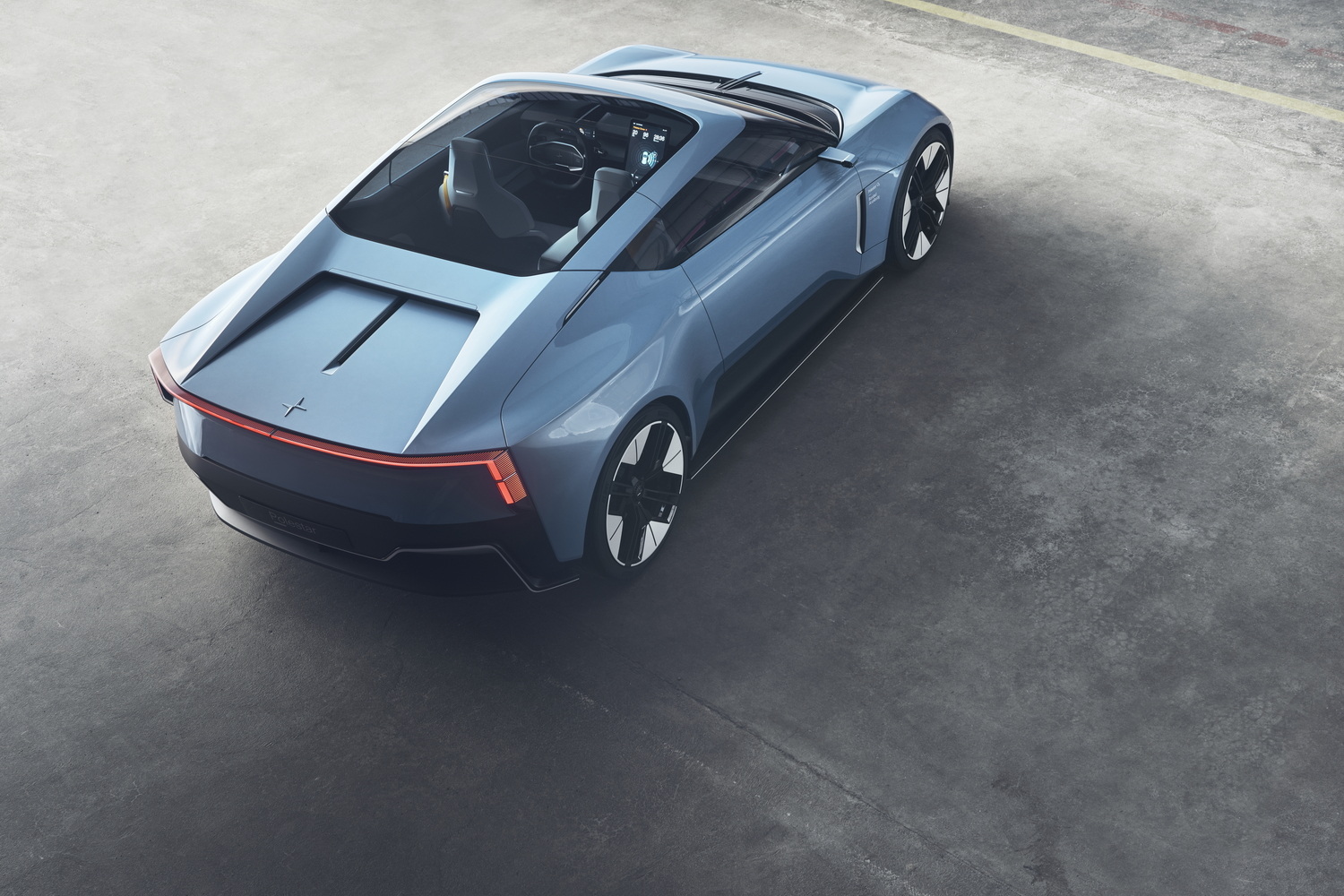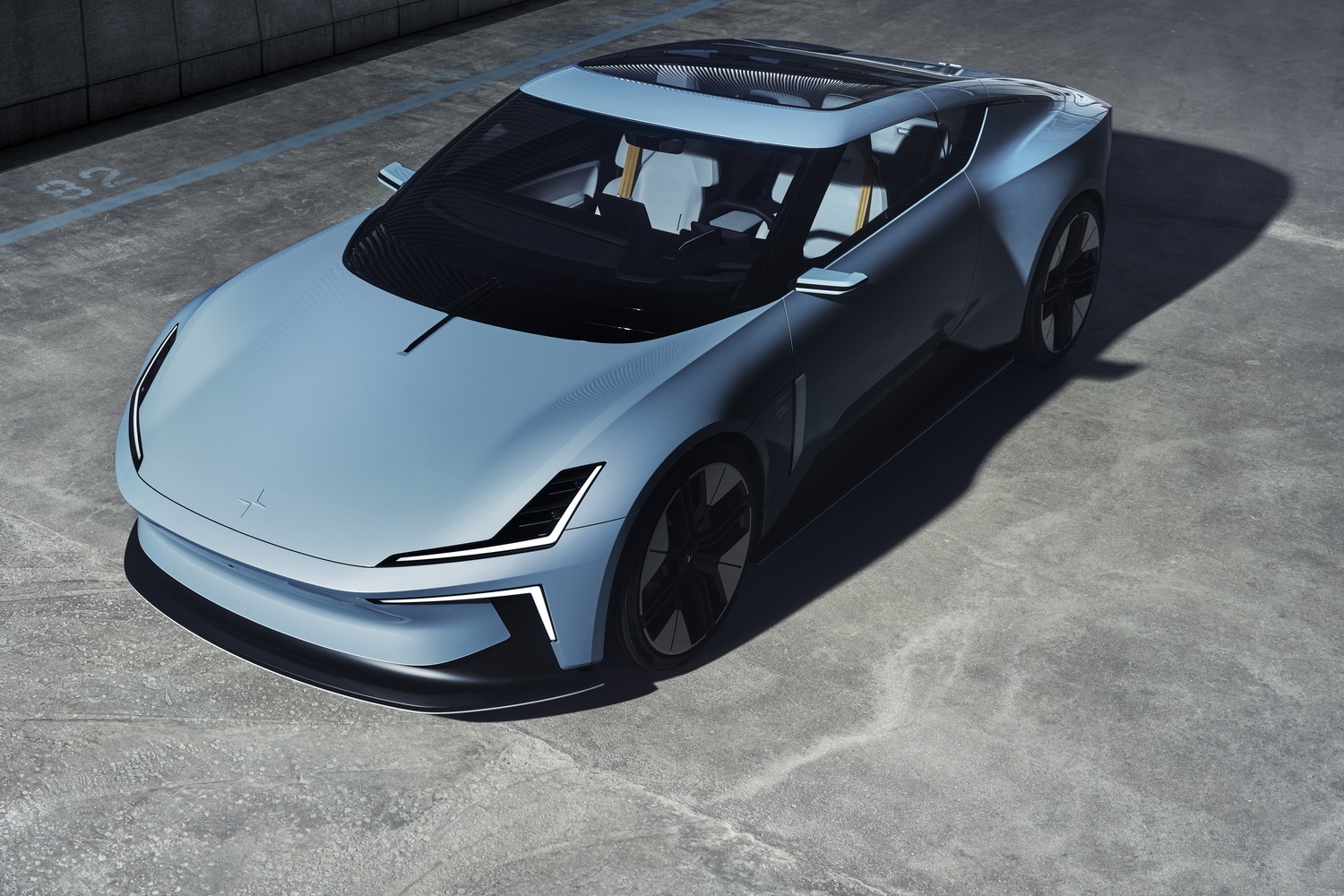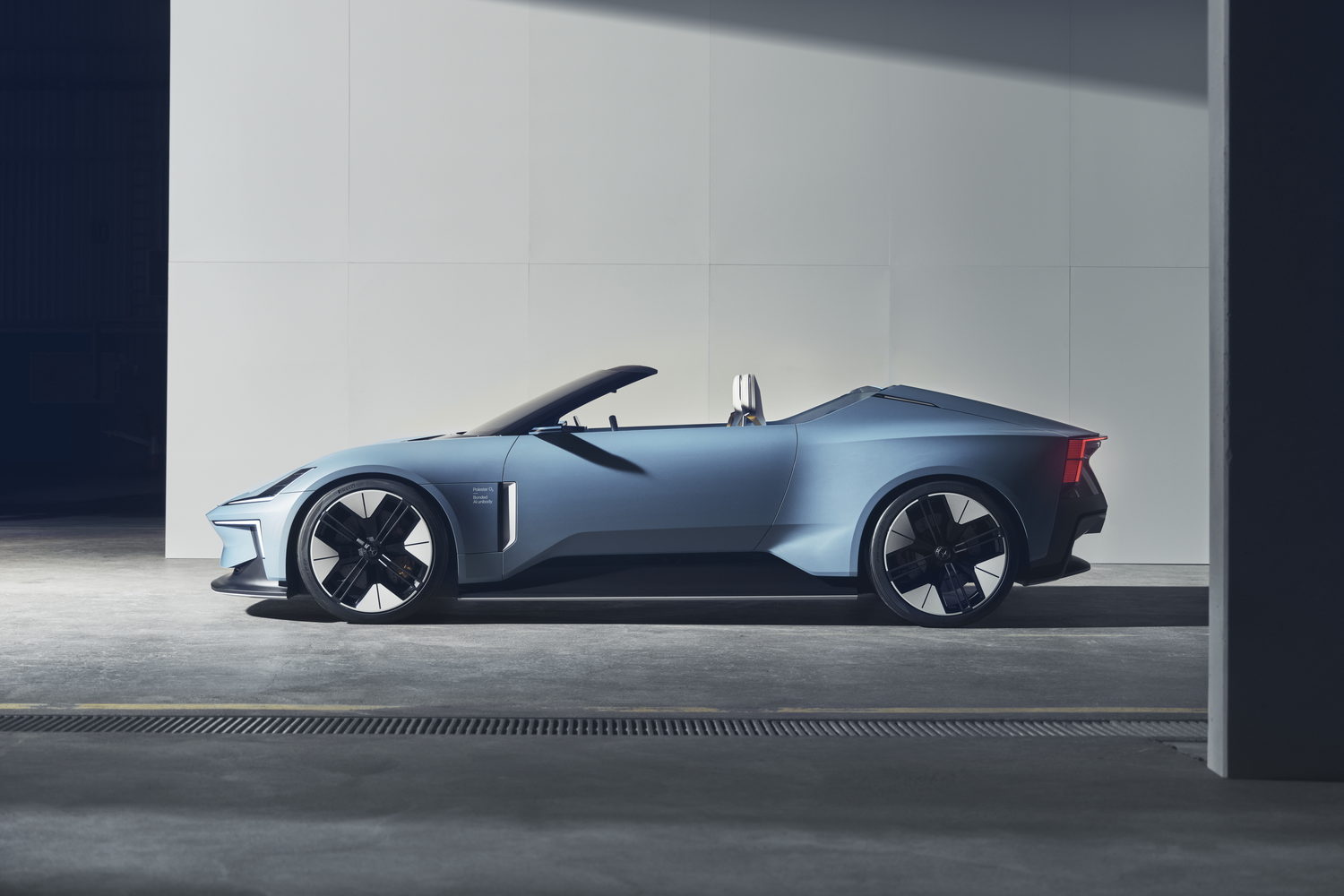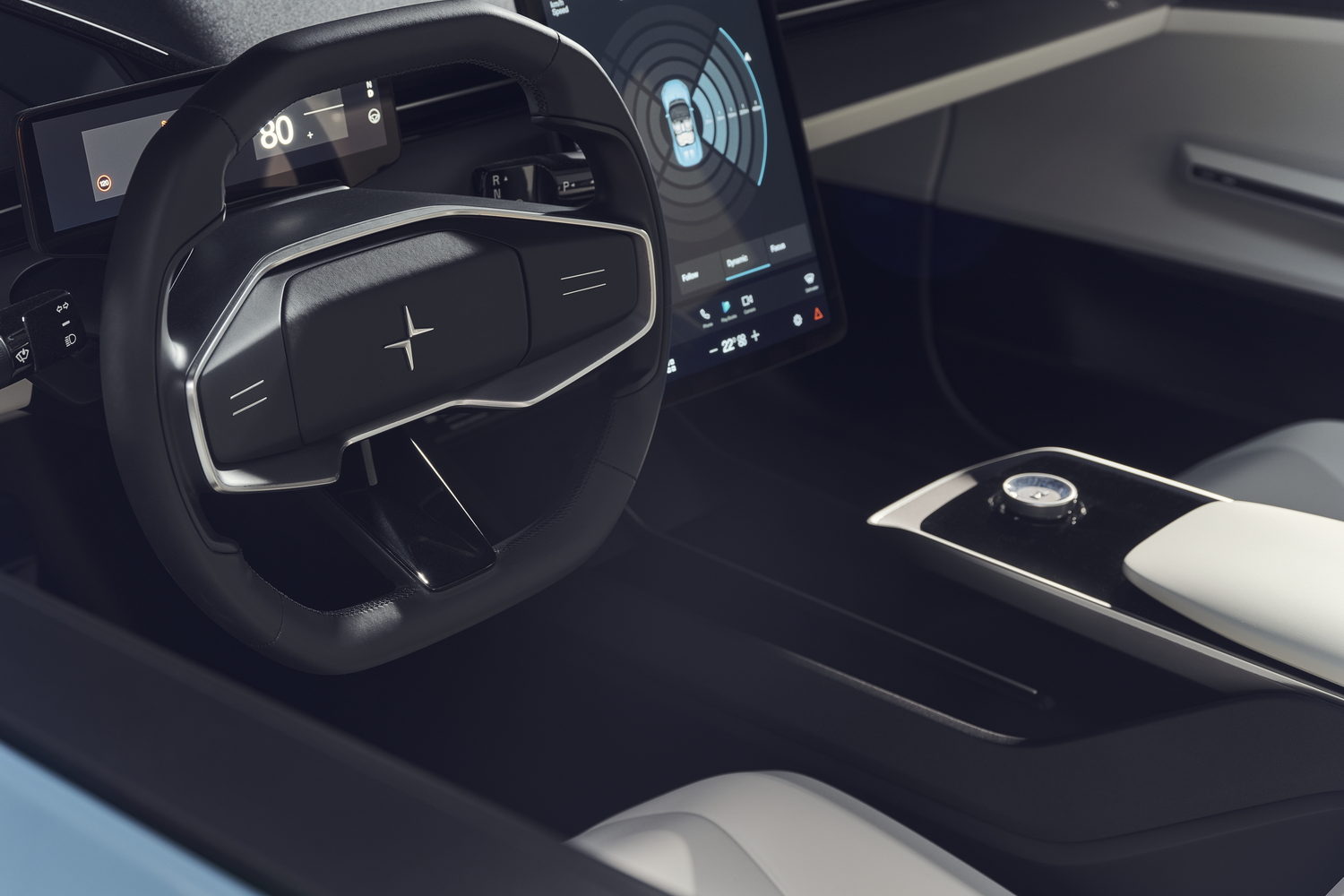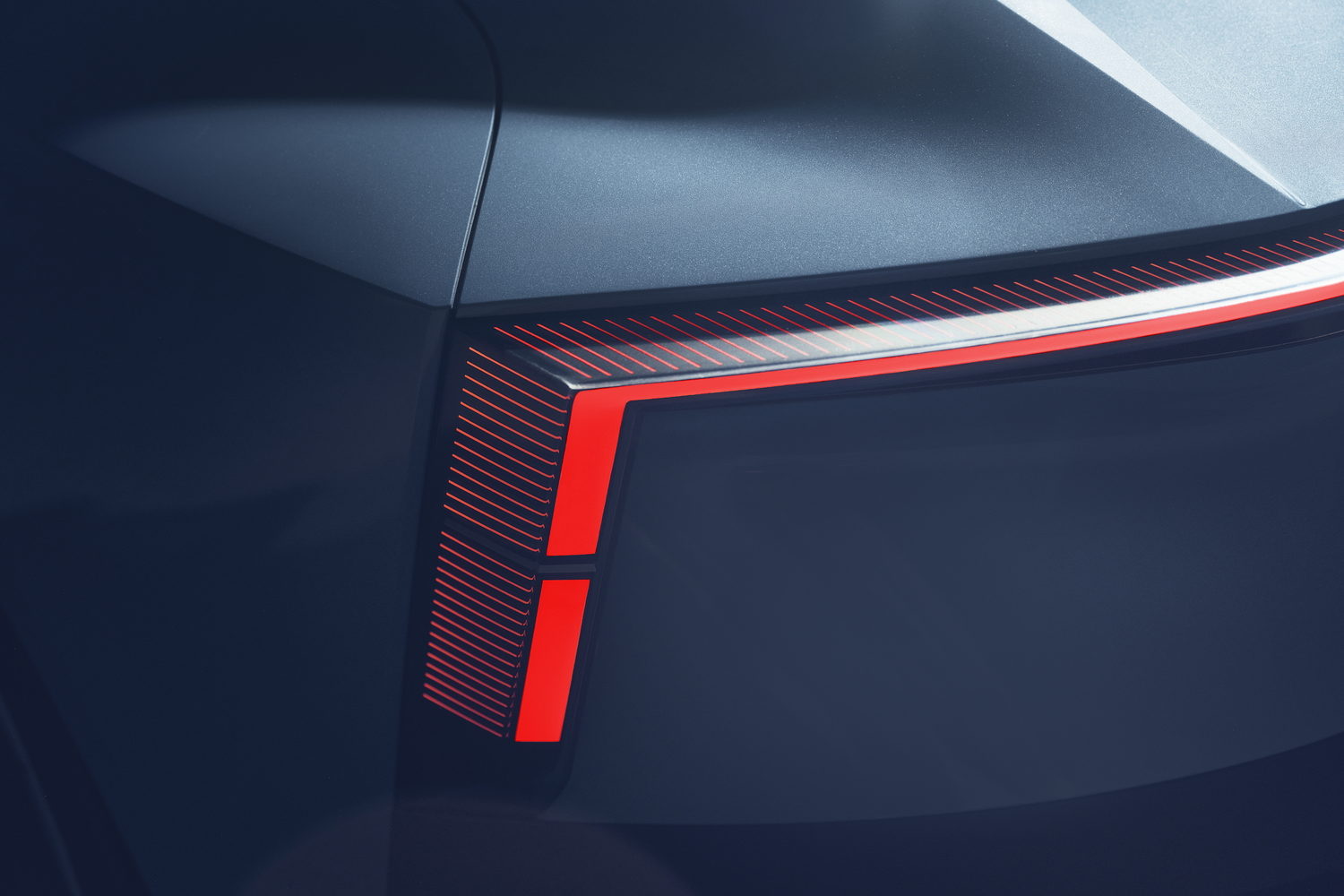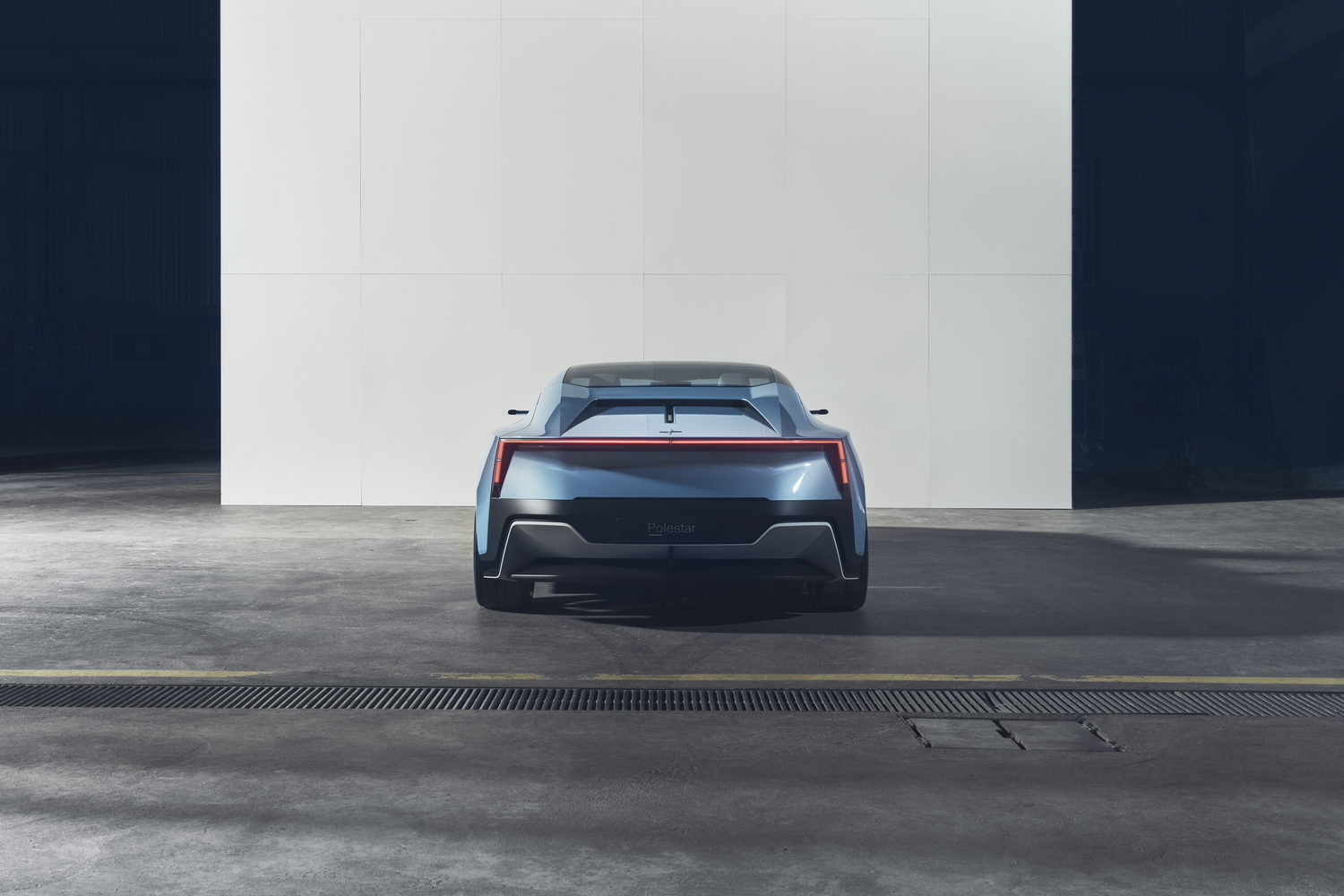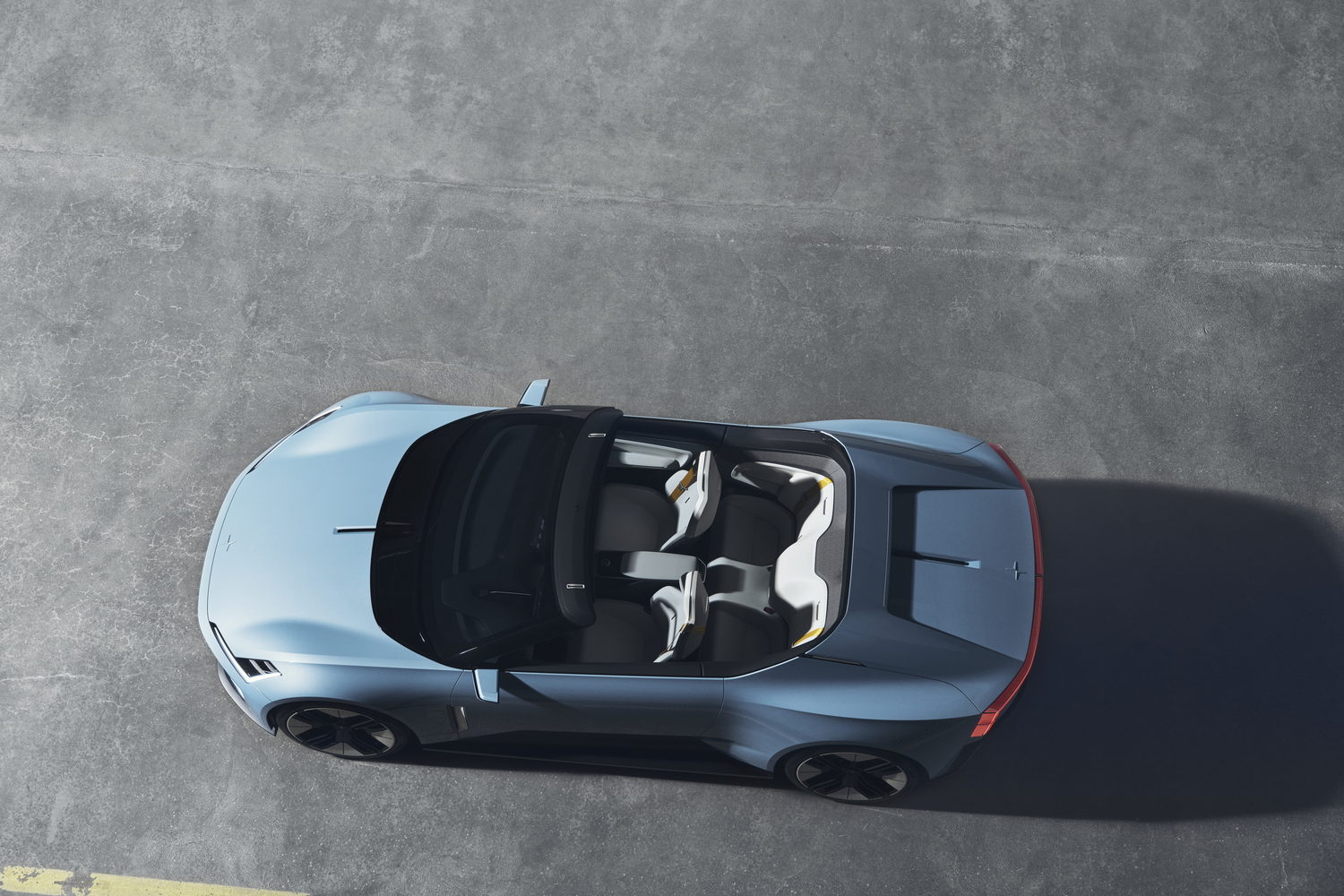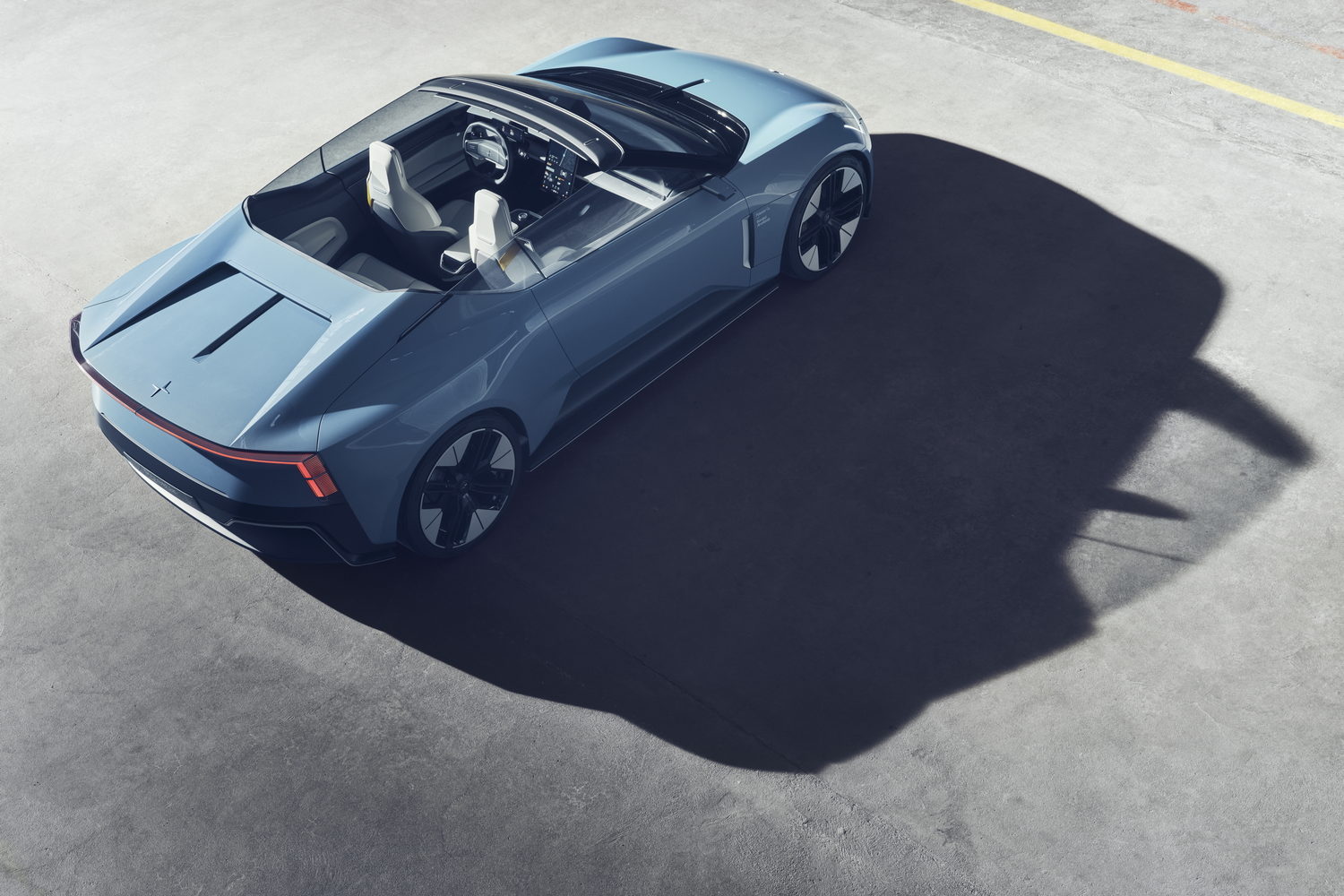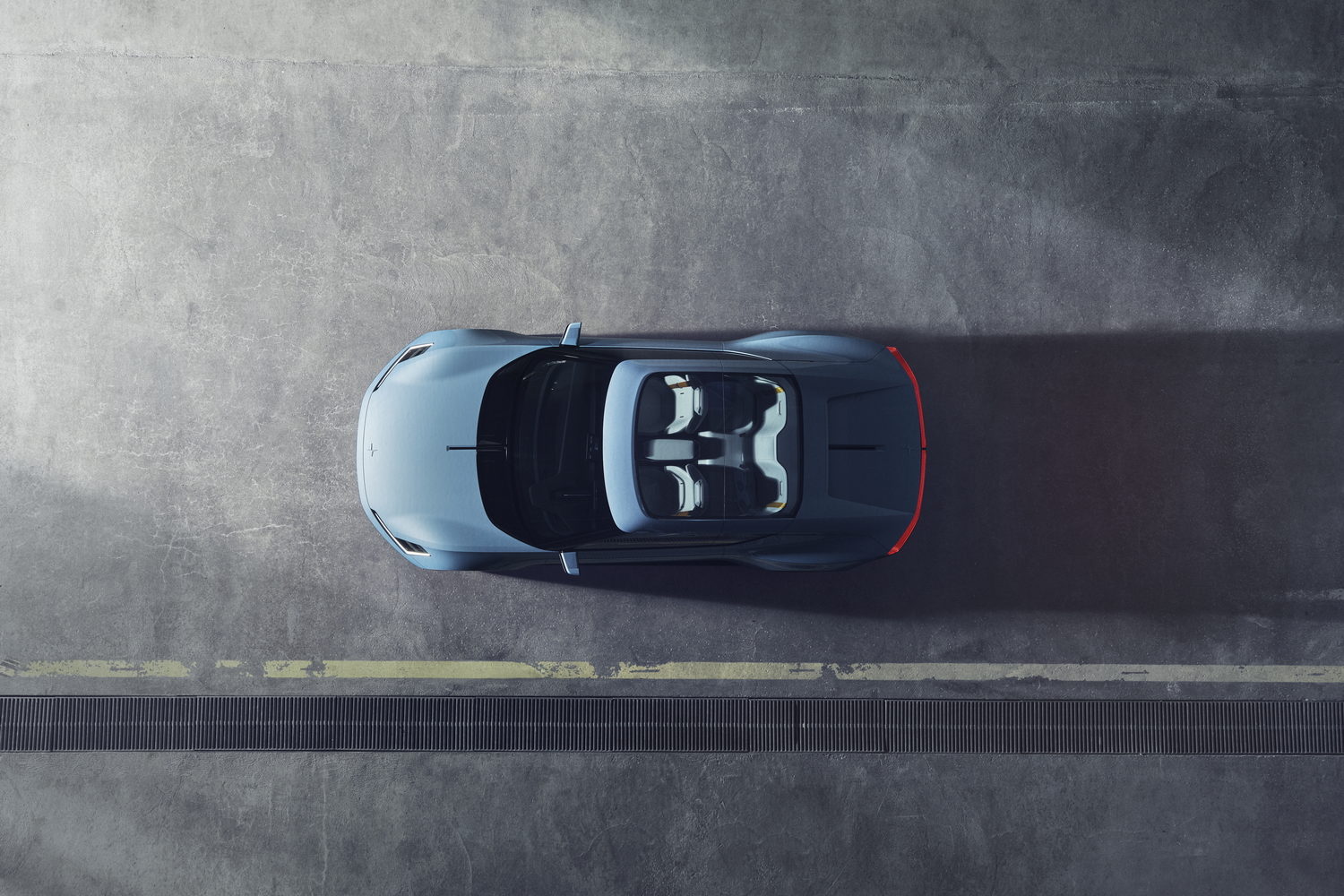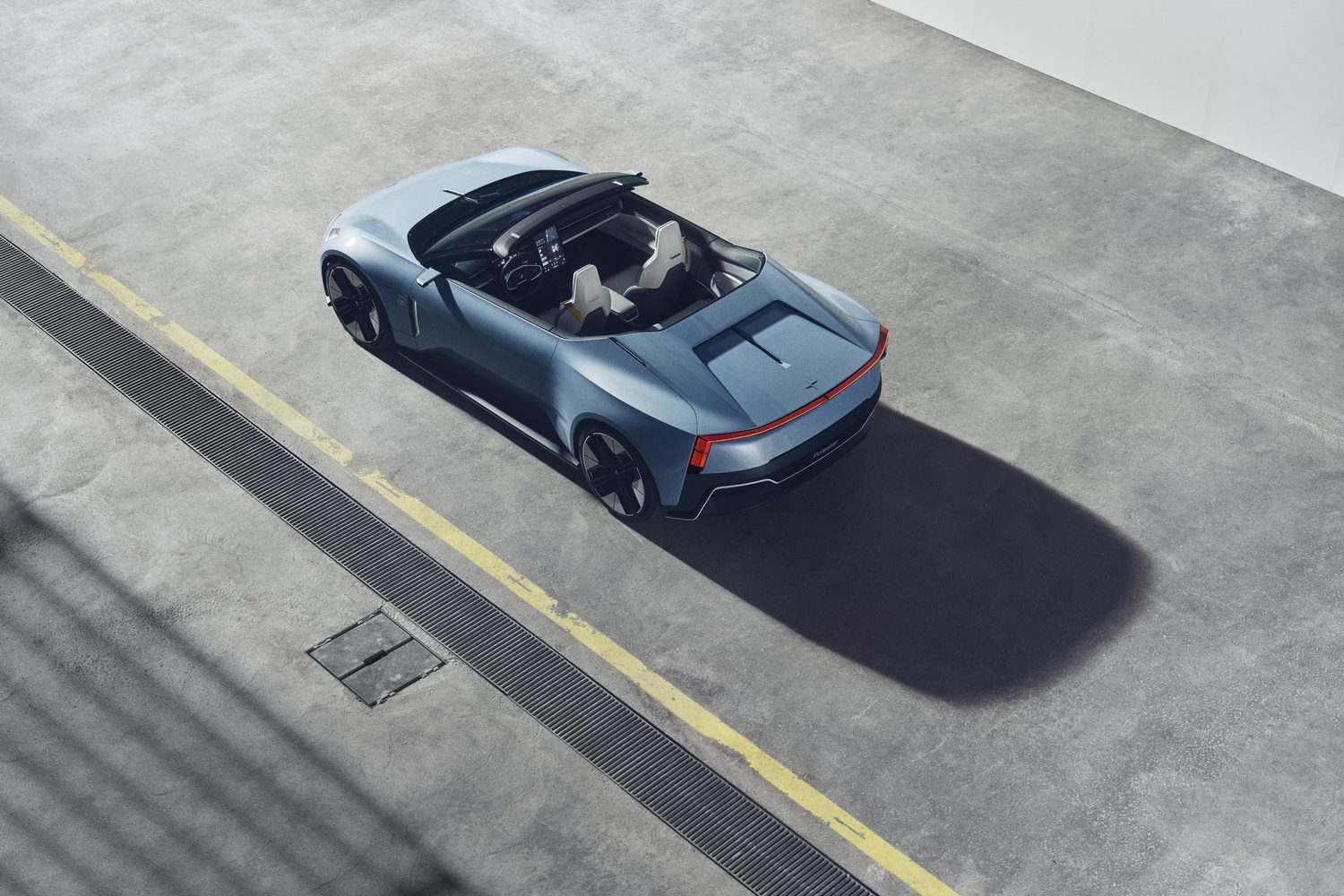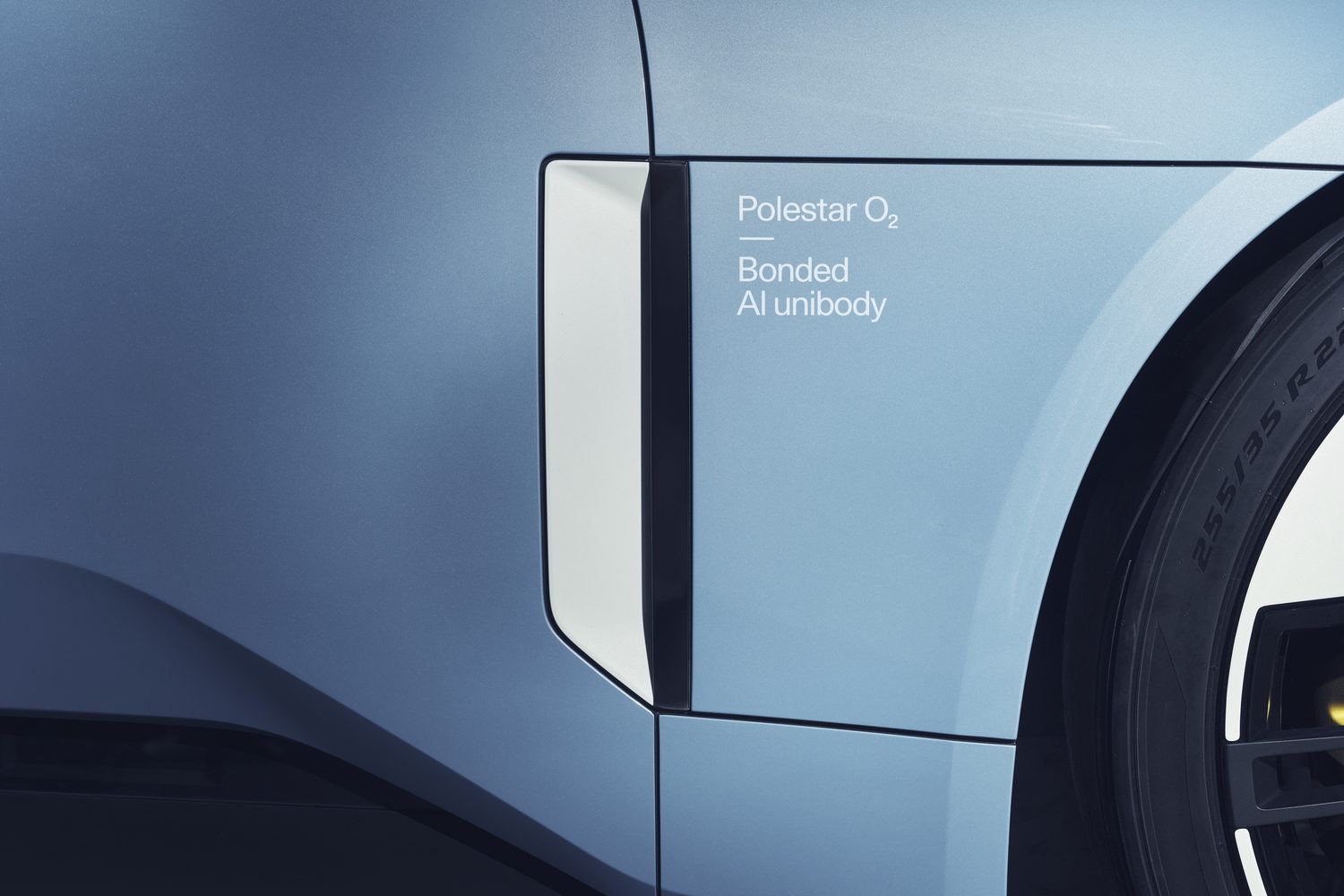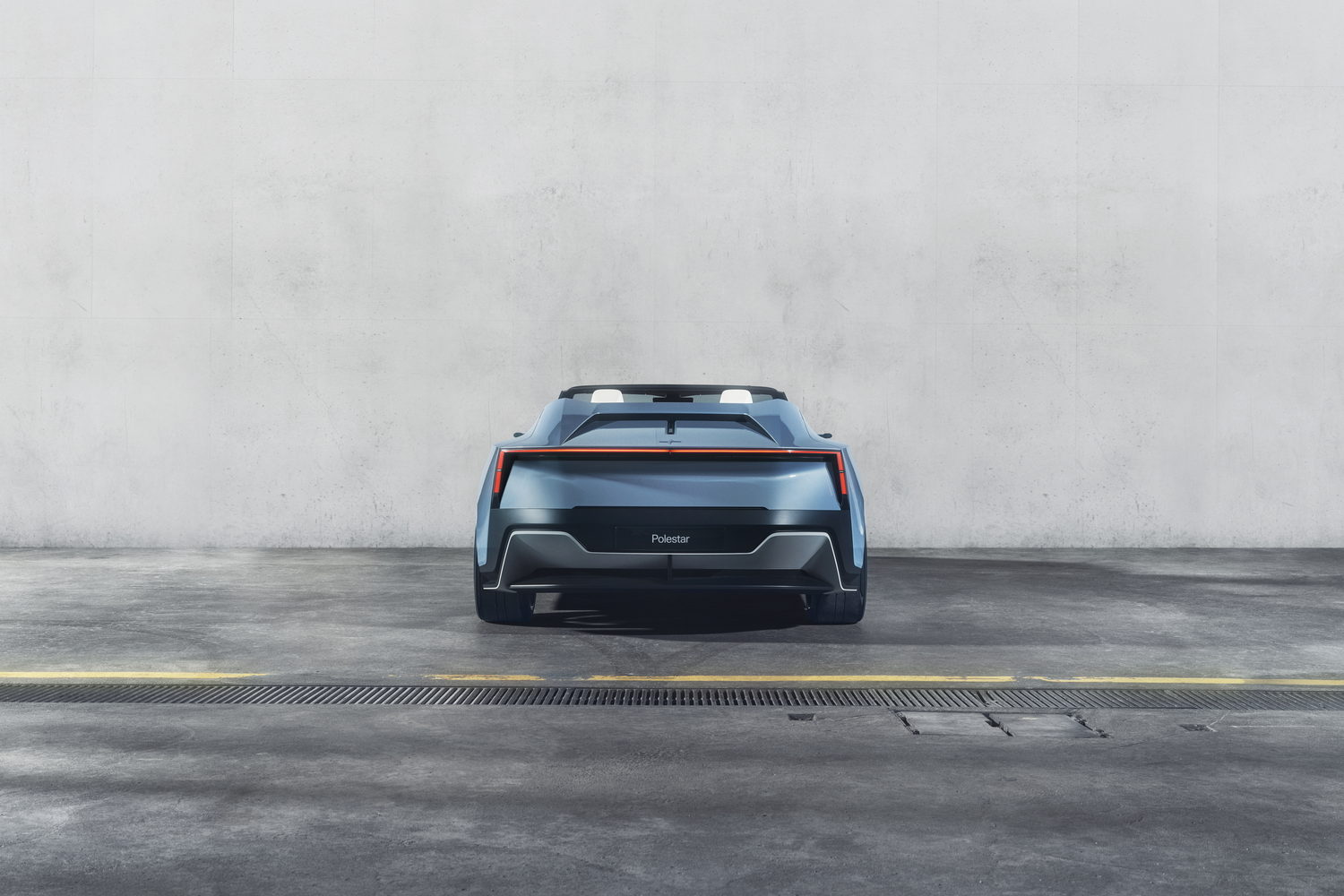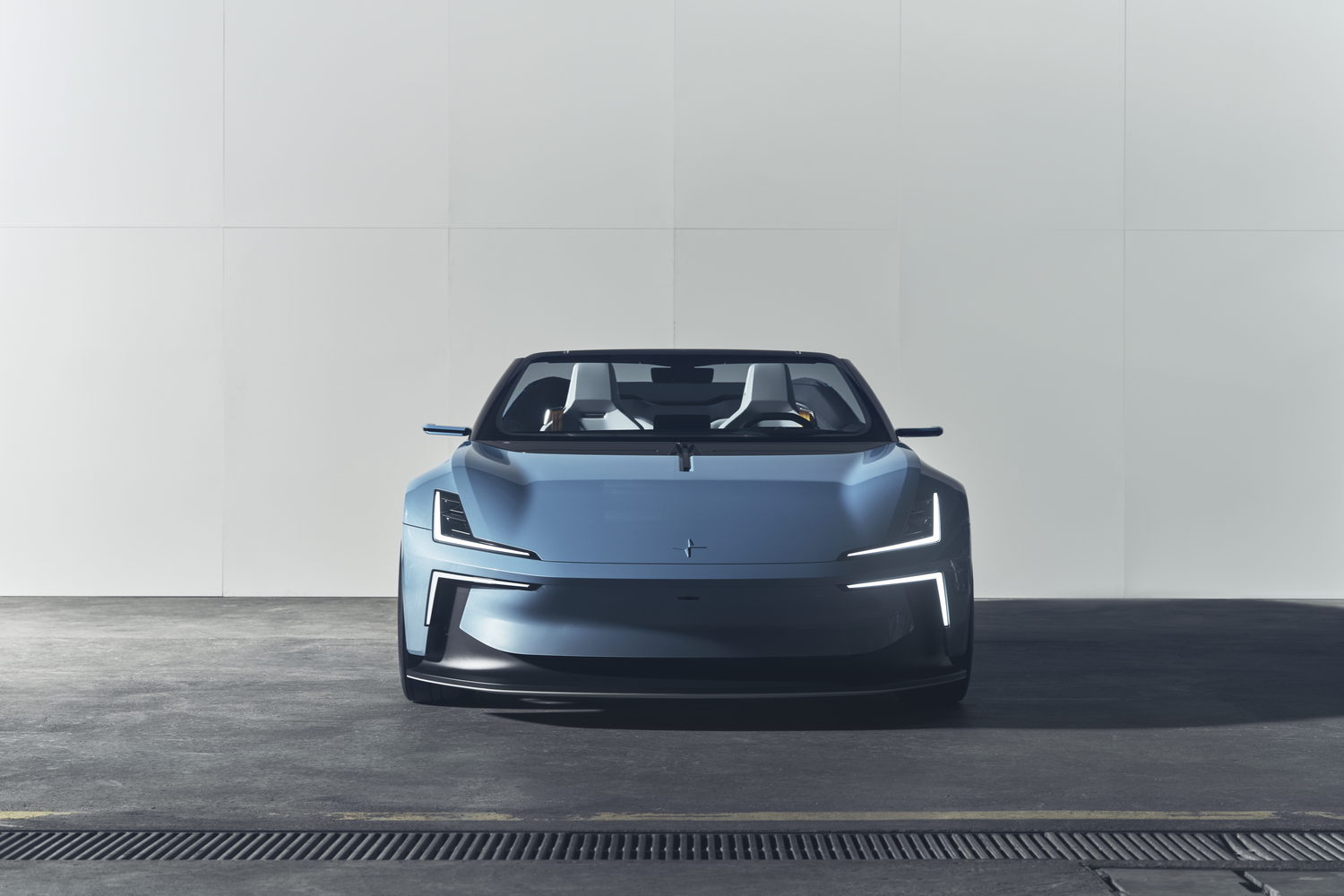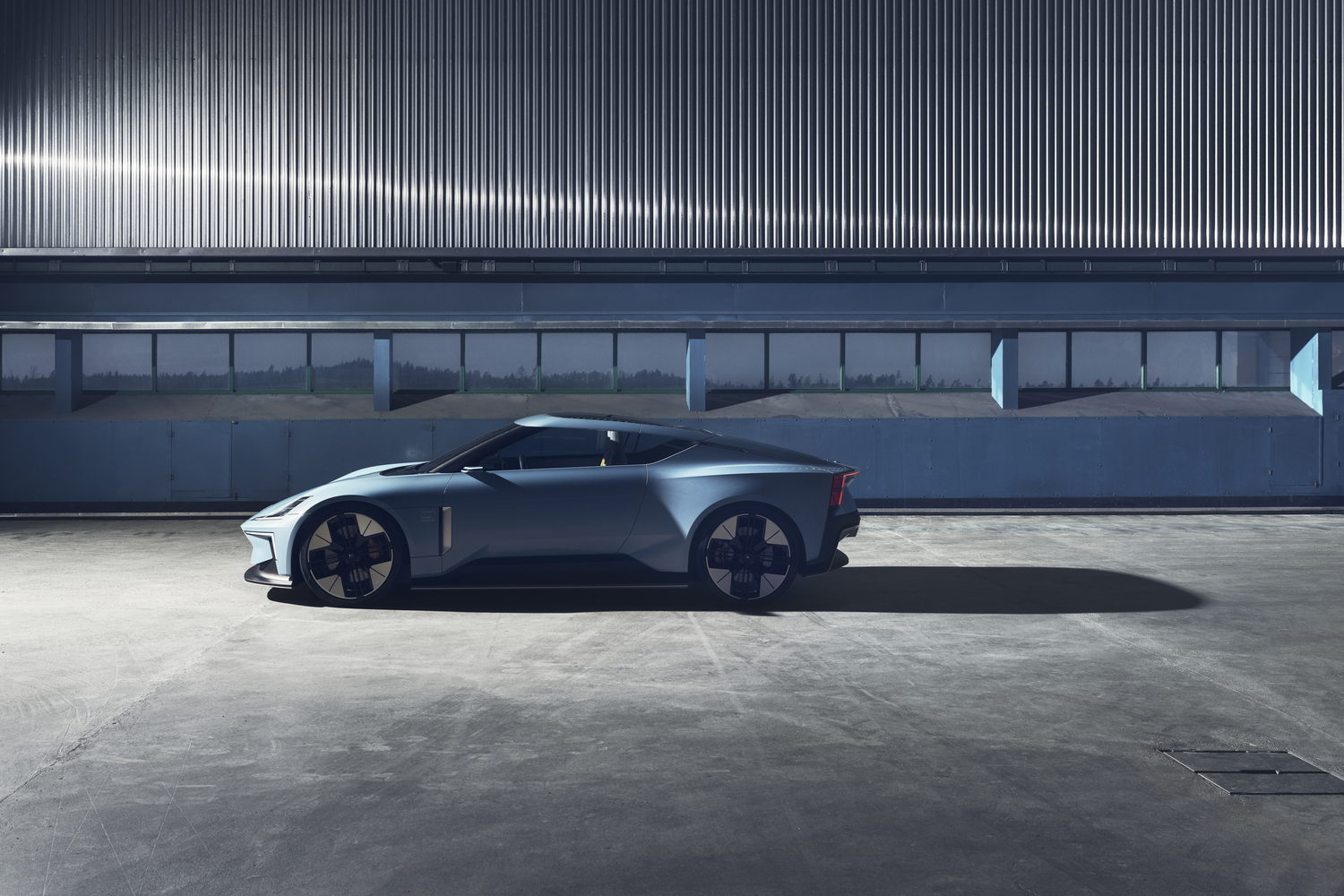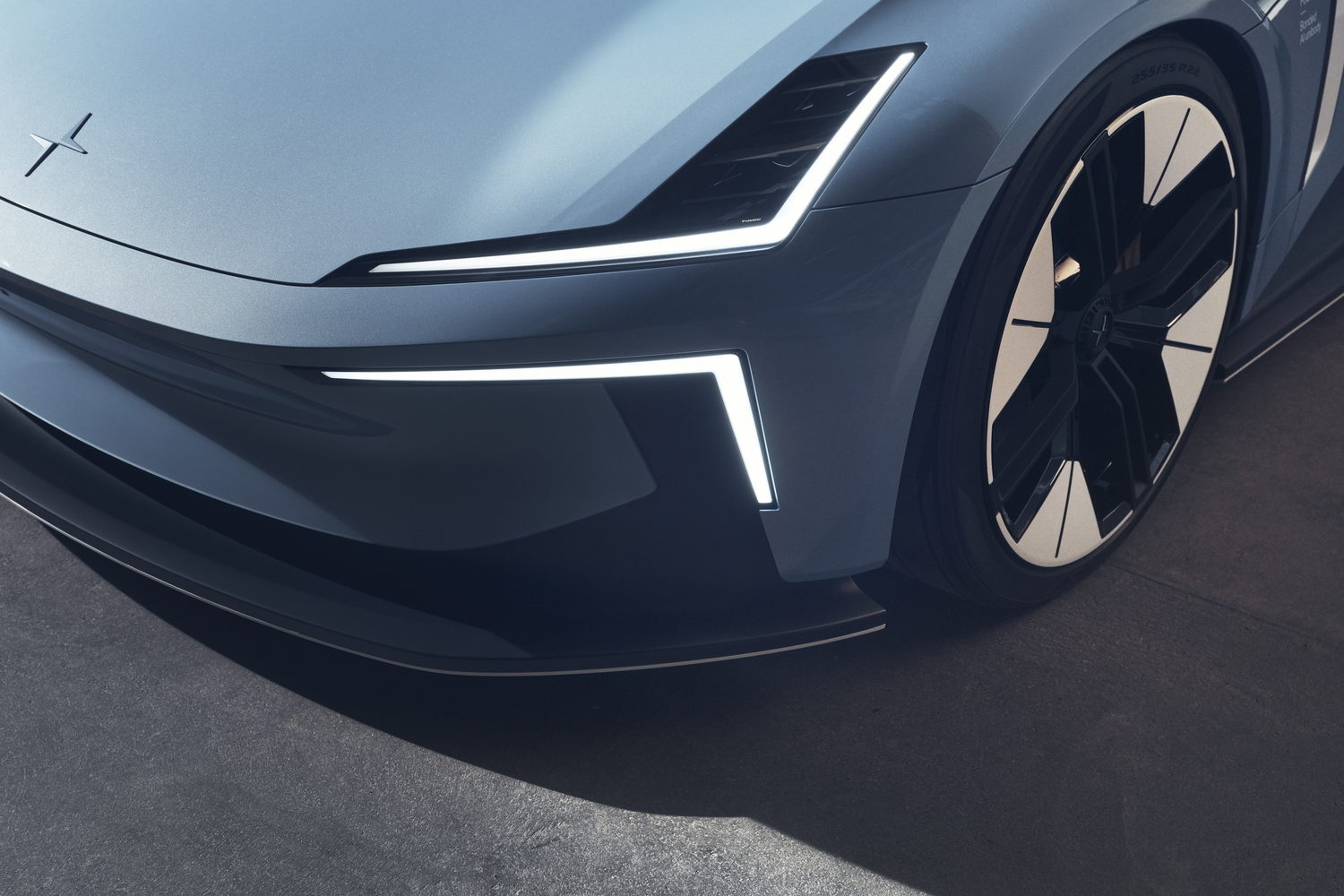Polestar has unveiled a new convertible concept car, the O2, based on the design and running gear of its well-received Precept show car.
Family resemblance
The O2 owes plenty to the Precept, not least some of its design language, such as the short overhangs, its sharp nose, front light signature and rear lights functioning as air blades to reduce aerodynamic turbulence. The speedster is, however, lower, wider and more muscular with a low greenhouse and roofline, tapering away towards the rear with buttressing on both sides.
While the Precept concept has been slated for production as the Polestar 5 electric saloon by 2024, it remains to be seen whether the O2 will become more than just a conceptual "halo car" to showcase the company's design capabilities.
Circularity
More than just electrifying its range, Polestar has been developing ways to increase the "circularity" of the materials used in its cars, enabling them to be recycled over and over once the car reaches the end of its life.
Underpinning the O2 is the same aluminium bonded chassis concept as will be seen in the Polestar 5 with much emphasis placed on carefully labelling the aluminium components so that they can be recycled according to their grade. The use of aluminium in the chassis also results in an overall weight reduction, making the car more efficient as well as improving handling and driving dynamics.
Inside sees the use of recycled and recyclable material such as the 'mono-material' used as the base for the interior thermoplastics, as well as the recycled polyester used for the soft furnishings such as the seats and covers.
Autonomous drone
One of the O2's headline features is the inclusion of an integrated autonomous cinematic drone. Developed in conjunction with Aerofugia (another subsidiary of Polestar's parent company Geely), Polestar's engineers designed an aerofoil that rises behind the rear seats to create a calm area of negative pressure, enabling the drone to take off unhindered.
Once airborne, the drone can follow the car at speeds of up to 90km/h recording the vehicle and its surroundings, for instance when driving through a scenic area or hustling through a tricky set of corners. The drone can then return to the car, where its video footage can be edited and uploaded to YouTube via the car's 15.0-inch central screen.
On the subject of the drone, Polestar's head of design, Maximilian Missoni said:
"We wanted to emphasise the experience you can have with a car like the Polestar O2 in new and unusual ways. Integrating an autonomous cinematic drone was something that allowed us to push the boundaries on the innovation front. Not needing to stop and off-load the drone before filming, but rather deploying it at speed, is a key benefit to this innovative design."
Polestar's plans
Although there's currently no indication as to whether a convertible Polestar will reach production in 2025 or beyond, the company has big plans for new cars over the next three years. This year should see the launch of the Polestar 3, a medium-sized SUV; the Polestar 4, a smaller SUV, is due in 2023, while the Polestar 5 will arrive in 2024.
For now, the O2 remains an expression of the company's capabilities as it attempts to attract investors ahead of an upcoming stock market listing on the NASDAQ.
According to the company's boss, Thomas Ingenlath:
"Polestar O2 is the hero car for our brand. It opens the door to our secret chamber of future potential. This is a taste of what we can design and engineer with the talent and technology we have in-house. It looks incredible, and being able to lower the roof and not hear an engine promises a superb sensation."

